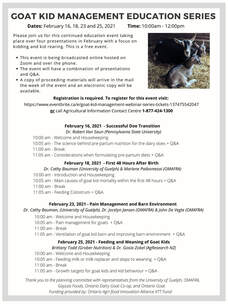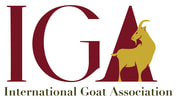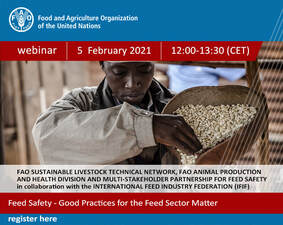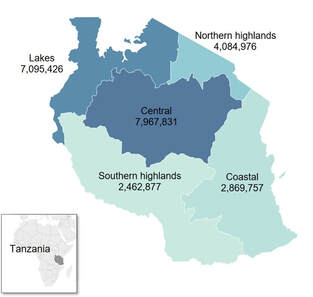0 Comments
 About this Event Goat kids are an important part of any dairy goat operation. In this webinar series we will discuss managing the nutrition of transition does, caring for kids in the 48 hours after birth, pain management, housing considerations, and pre-weaning management of goat kids. There will be some key findings presented from the Goat Kid Mortality Project that took place in Ontario from 2017-2020. This webinar series will take place 10:00am to 12:00pm on February 16, 18, 23, & 25, 2021 and will be hosted on Zoom platform and teleconference. You can sign-up for one or all four webinars in the series. Registration is free. The scheduled webinars include: February 16, 2021: Successful Transition Doe Management Dr. Robert Van Saun – Extension Veterinarian - Pennsylvania State University
February 18, 2021: Caring for Kids in the First 48 hours Dr. Cathy Bauman – Ontario Veterinary College – University of Guelph; Marlene Paibomesai – Dairy Specialist – OMAFRA
February 23, 2021: Pain Management and Housing Considerations Dr. Cathy Bauman – Ontario Veterinary College – University of Guelph; Dr. Jocelyn Jansen– OMAFRA; John Van de Vegte – OMAFRA
February 25, 2021: Pre-weaning Goat Kid Management Brittany Todd – Young Animal Nutritionist – Grober Nutrition Dr. Gosia Zobel – Behaviour and Animal Welfare– AgResearch NZ
Sign-up to learn the latest knowledge on managing your does through the transition period, your kids from birth to weaning and how many of these management practices can be applied on your farm. This is a continued education opportunity and you will receive a certificate of participation. Funding OMAFRA-Knowledge Translation and Transfer Grant Planning Committee University of Guelph, OMAFRA, Ontario Goat, Gay Lea Foods Co-operative, Ontario Dairy Goat Co-operative Agitu Ideo Gudeta, who was killed on Wednesday, used abandoned land to start a goat farming project employing migrants and refugees. To learn more about her life visit the links below. iga-goatworld.com
Lenin Aguirre-Riofrio, Teddy Maza-Tandazo, Manuel Quezada-Padilla, Oscar Albito-Balcazar, Alex Flores-Gonzalez, Osvaldo Camacho-Enriquez, Amparo Martinez-Martinez, BioGoat Consortium, and Juan Vicente Delgado-Bermejo
Simple Summary An individual from a population presents a series of characteristics that differ from the rest and that increase as the kinship relationships are lower; this leads to the fact that two populations that stop exchanging genetic material through mating eventually come to present characters common to all members of each, but different between the two. This was what happened with the animal populations brought to America more than 500 years ago from the Iberian Peninsula in the colonization period, resulting in Creole populations that inhabit the harshest environments of our immense geography. The Creole goat “Chusca Lojana” has adapted to live in the dry forest region of Southern Ecuador, where environmental conditions are warm-dry, with sparse vegetation and a rather irregular topography. In the present study, the intra-breed genetic diversity of this goat is analyzed as well as its genetic relationships with other breeds. Significant FIS and intra-breed structure show that there is some heterogeneity and structure within the breed. However, inter-breed structure results underline that this breed is differentiated from other Creole breeds, because crossbreeding with other breeds was not detected; therefore, we must take advantage of this valuable genetic resource, and ensure its conservation and selection. Abstract The largest population of goats (62%) in Ecuador is in the dry forest region in the south of the country. A Creole goat, named “Chusca Lojana”, has adapted to the dry forest region where environmental conditions are warm-dry, with sparse vegetation. Knowledge of the genetic information of the Creole goat is important to determine intra-racial diversity, the degree of genetic distance among other breeds of goats, and the possible substructure of the population, which is valuable for the conservation of such a species’ genetic resources. A total of 145 samples of the Creole goat was taken from the four biotypes previously identified. Genetic analyses were performed using 38 microsatellites recommended for studies of goat genetic diversity (FAO-ISAG). The results of within-breed genetic diversity showed a mean number of alleles per locus (MNA) of 8, an effective number of alleles (Ae) of 4.3, an expected heterozygosity (He) of 0.71, an observed heterozygosity (Ho) of 0.63, polymorphic information content (PIC) of 0.67, and an FIS value of 0.11. Between-breed genetic diversity among 43 goat populations (native of Spain, American Creole, Europeans, and Africans) showed the following values: FIS = 0.087, FIT = 0.176, and FST = 0.098. Regarding the analysis of the population structure, the results showed that the Creole Chusca Lojana goat population is homogeneous and no genetic separation was observed between the different biotypes (FST = 0.0073). In conclusion, the Chusca Lojana goat has a high genetic diversity, without exhibiting a genetic substructure. Therefore, it should be considered as a distinct population because crossbreeding with other breeds was not detected. Keywords: Capra hircus, biodiversity, genetic resources, conservation, microsatellites markers Dear colleagues,
We would like to inform you that the 10th International Sheep Veterinary Congress (ISVC) that was scheduled to be held in 2022 from September 19th to 23rd, in Seville, together with the 5th Congress of the ECSRHM, will be delayed six months, to March 6 to 10, 2023. As it is known, the ISVC is being organized by the Spanish Society for Sheep and Goat Production (SEOC). The organizing committee has been working hard for several years in order to perform a successful conference at the organizational, content (scientific, cultural and recreational aspects) and attendance (delegates and speakers) levels. The reason that has led us to make this decision has been the postponement of the 31st World Buiatrics Congress (WBC) 2021-MADRID, to September 4-8, 2022. The situation caused by the COVID-19 pandemic has forced the organizers (the Spanish Society ANEMBE) to postpone the conference to September 2022. As we said before, we would like to have a successful ISVC congress, and as you know, although the WBC is a congress eminently dedicated to cattle, it also has a section dedicated to small ruminants. The WBC is an event with which we share delegates, speakers and members of the Scientific Committee, so it is likely that by holding both events at such close dates, many potential participants, would be forced to choose between the two congresses, negatively affecting both the number of attendees (delegates) and the quality (speakers). We also share sponsor companies and institutions, so holding both congresses in the same year and in the same country, would negatively affect their financial support to our congress. For these reasons, after taking into account the opinions of the members of the Organizing and Scientific Committees of the ISVC-Seville, and obtaining the ISVA and ECSRHM approvals, we considered postponing it to March 2023 to be the best option. If this postponement could cause inconvenience to any delegate, we sincerely apologize on behalf of all the organizers. We also want to communicate, that we have decided, together with the ISVA, to organize a virtual meeting from 23rd to 25th November 2021 of which we will inform you soon. Looking forward to meeting all you in March 2023 in Seville!! Yours sincerely, Jesse Barandika & María J. Alcalde Presidents of the Organizing Committee ISVC 2023 website: https://isvc2022.com/ Small ruminants (goats and sheep) are kept for multiple purposes and provide a modest, but increasing, contribution to national production of red meat and milk. Most products are consumed by the household or traded through informal markets. Industry snapshot:
Small ruminant production systems Pastoralism with larger herds
Smallholder herds
Smallholder intensive
|
IGA Blog
The International Goat Association promotes goat research and development for the benefit of humankind, to alleviate poverty, to promote prosperity and to improve the quality of life. Archives
May 2024
Categories
All
|
|
International Goat Association
2516 Millbrook Rd., Little Rock, AR72227 USA email: [email protected] -454-1641 |




 RSS Feed
RSS Feed